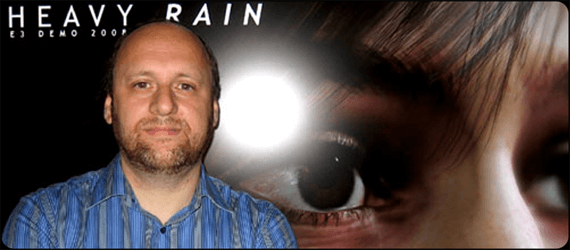Quantic Dream founder David Cage has never been one to shy away from making bold statements regarding the future of the video game industry, especially when those statements are about all things cinematic or narrative-related. This time however, the mastermind behind Indigo Prophecy and Heavy Rain had some choice comments regarding the way Team Bondi captured the character performances for their upcoming period-piece crime thriller, L.A. Noire, and the short version is that he’s not that impressed.
MotionScan is the tech behind the game’s ability to create stunning and full-featured visages. It uses 32 HD cameras to film the actor’s head so that every little twitch and glance is recorded for the game. While most development houses would sell their mothers for the opportunity to achieve the level of realistic facial movement on display in L.A. Noire, Cage sees a rather large problem with their capture methods, namely that the facial performances are captured separately from the body performances. Not only is he indifferent to MotionScan, but he also believes that what his team at Quantic Dream is doing is already ahead of the game in terms of taking game performances to the next level. Here’s what he had to say:
“I think it's an interesting solution to a problem for now. But it's also an interesting dead end. That's exactly what I feel. Their technique is incredibly expensive and they will never be able to shoot body and face at the same time.
We are doing that now [at Quantic], and our next games will be shot with performance capture," he explained. "We see a huge difference between shooting the face and body separately and shooting everything at the same time. Suddenly you've got a real sense of acting that is consistent. You can't imagine how related what you say with your face is to what your body does.”
As cocky as it may sound, it’s hard to argue with Cage’s experience in this area of game development. Heavy Rain was indeed a technical achievement on many levels for gaming, and even though its characters moved around as though they were imitating the Tin Man any time he needed oil, it’s clear that Cage has an eye for, and cares about, this aspect of gaming. The stiff and sometimes unnatural character movements in Heavy Rain may have very well been from this separation between facial and body performances, and if Cage says that’s not good enough, then perhaps it isn’t.
In fact, Cage is so confident in his team’s work that he thinks in-game, real-time performances on par with the overgrown Smurfs from James Cameron’s recent box office behemoth, Avatar, isn’t too far down the road:
“With the technology we use, we can improve; there is a lot of room for improvement and we hope to show very soon where we are now. We've made significant progress since Heavy Rain and will continue to make progress until we reach the stage of Avatar. That is probably three, four five years from now."
Heavy Rain was a polarizing game for many, but Cage is at the front of the pact when it comes to cinematic presentation in video games. Do you think he’s being fair to L.A. Noire, or is he just jealous that his game wasn’t recognized at the Tribeca Film Festival?
We’ll find out if all the right heads are on the right bodies when L.A. Noire steps out of the shadows on May 17th for the Xbox 360 and PlayStation 3.
-
Follow Game Rant on Twitter @gamerant
Source: CVG

